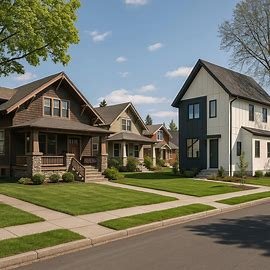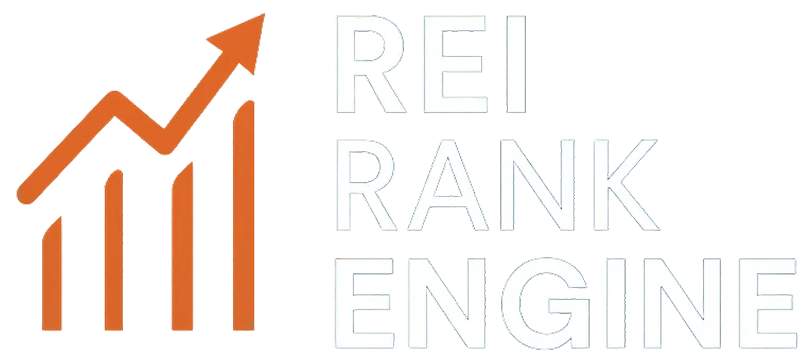
“How REI Branded Home Buyer Can Help”
The History of Housing in Spokane, Washington: From Railroads to Real Estate in 2025
Spokane, Washington, often called the “Lilac City,” has a housing story shaped by boom, bust, rebuilding, and reinvention. From its early railroad-driven growth to the modern real estate market of 2025, Spokane’s neighborhoods tell the tale of economic cycles, community resilience, and shifting housing needs. In this cornerstone guide, we’ll explore how Spokane’s housing market evolved from early settlement through today’s investment landscape and what it means for homeowners and sellers right now.
Spokane’s Early Settlement and Housing Foundations (1800s)
The housing story of Spokane begins in the late 1800s. Settlers were drawn to the Spokane River, fertile valleys, and nearby timber resources. Housing was simple at first log cabins and wooden structures built from local forests. As the railroad arrived in the 1880s, Spokane transformed from a small settlement into a growing city. Housing expanded rapidly, especially near downtown and along the river.
By 1889, Spokane was booming but disaster struck. The Great Spokane Fire destroyed much of the city, leveling downtown and forcing a massive rebuilding effort. This event shaped Spokane’s housing forever: stronger brick and stone buildings replaced wooden structures, while residential neighborhoods began spreading outward to areas like Logan and Hillyard.
The Railroad Boom and Spokane’s Neighborhood Expansion
The Northern Pacific Railway and Great Northern Railway turned Spokane into a commercial hub. Thousands of workers needed homes, leading to the development of historic neighborhoods. Craftsman-style bungalows and Victorian homes lined streets in areas like the Downtown core, Garland District, and Whitman neighborhood. Housing reflected prosperity, with large porches, detailed woodwork, and access to streetcar lines.
Neighborhoods grew around employment centers Hillyard near the rail yards, South Hill for professionals, and West Central for working families. Each district developed a unique housing identity, many of which remain visible today.
Spokane’s Housing During the 20th Century
In the early 20th century, Spokane continued to expand. Housing reflected broader U.S. trends:
- 1920s–30s: Modest bungalows and Tudor-style homes filled middle-class neighborhoods.
- 1940s–50s: Post-WWII demand spurred suburban expansion. Ranch-style homes became popular in Spokane Valley and North Spokane.
- 1960s–70s: Multi-family apartments and duplexes rose near Gonzaga University and the University District to serve students and renters.
Economic shifts also affected housing. Declines in railroads and mining slowed growth, but Spokane remained stable compared to boom-bust cycles in other Washington cities.
Urban Renewal and Housing Challenges (1980s–2000s)
Like many American cities, Spokane experienced urban renewal efforts that reshaped neighborhoods. Downtown saw mixed redevelopment, while some older homes fell into disrepair. Vacant properties and code violations increased in parts of East Central and West Central Spokane, while suburban growth surged in Spokane Valley and Cheney (City of Cheney).
By the early 2000s, housing affordability was still relatively strong compared to Seattle or Portland. However, deferred maintenance, absentee landlords, and aging housing stock became pressing issues in several neighborhoods.
The Great Recession and Spokane’s Real Estate Market (2008–2012)
The 2008 housing crash hit Spokane harder than many expected. Home values dropped significantly, foreclosures rose, and abandoned homes became more common. Neighborhoods like Hillyard and parts of North Spokane saw rising vacancies, while West Spokane dealt with declining property values.
Investors began purchasing distressed homes, often at auctions or foreclosure sales. This marked the beginning of Spokane’s modern cash-buyer market, where real estate investors began playing a larger role in neighborhood redevelopment.
Spokane’s Housing Rebound (2013–2019)
After the recession, Spokane’s market steadily improved. Millennials entered the housing market, retirees relocated for affordability, and telecommuters began considering Spokane’s lifestyle. Neighborhood revitalization projects in areas like Downtown and the University District spurred demand for both rentals and owner-occupied housing.
Craftsman homes, once neglected, were restored. New construction increased in Spokane Valley, South Hill, and Five Mile Prairie. Housing affordability was still attractive compared to Seattle, making Spokane a migration hotspot.
Spokane’s Real Estate Market During COVID-19 (2020–2022)
The pandemic reshaped Spokane’s housing market. Remote work fueled migration from Seattle and California, driving demand and pushing prices to record highs. Bidding wars became common, and median home prices rose dramatically. Many first-time buyers were priced out, while investors increased their presence in cash purchases.
Spokane homeowners who wanted to sell during this time often benefited from strong equity gains — but rising costs also made buying again a challenge.
The Spokane Housing Market in 2025
Today, Spokane’s housing market reflects both opportunity and challenges. According to City of Spokane reports and county data, demand remains strong, but affordability is a growing issue. Key trends include:
- Rising home prices: Spokane is no longer the “cheap alternative” to Seattle it once was.
- Limited inventory: Sellers often receive multiple offers, especially in South Hill and the Garland District.
- Rental market growth: Investors continue to target duplexes and multifamily properties.
- Distressed property opportunities: Homes with water damage, fire damage, or code violations are increasingly sought by cash buyers.
Neighborhood Spotlight: Spokane’s Diverse Housing Stock
Each Spokane neighborhood tells its own housing story:
- Garland District: Known for historic bungalows and mixed-use blocks.
- Logan Neighborhood: Home to Gonzaga University, with student rentals and single-family homes.
- Downtown Spokane: Urban lofts, historic apartments, and revitalized buildings.
- North Spokane: Suburban growth with newer subdivisions and shopping corridors.
- Hillyard: Once a railroad town, now a mix of affordable housing and revitalization projects.
- University District: Student housing, apartments, and modern developments.
- Whitman: Residential streets with working-class homes and older rentals.
- Cheney: College town near Eastern Washington University, with strong rental demand.
FAQs About Spokane’s Housing Market
- Is Spokane still affordable? Yes compared to Seattle, but prices have risen steadily since 2015.
- What’s the median home price in 2025? Recent reports place it around $420,000, depending on neighborhood.
- Which neighborhoods are most in demand? South Hill, Garland, and Downtown lofts continue to attract buyers.
- Can I sell a distressed home in Spokane? Yes. Cash buyers frequently purchase homes with damage, liens, or code violations.
Why Work With REI Branded Home Buyer
At REI Branded Home Buyer, we specialize in purchasing Spokane homes in any condition — from historic houses in Logan to rentals in Cheney. Whether you’re facing water damage, foreclosure, or simply need a fast sale, we provide cash offers and close quickly.
Take the Next Step
Are you ready to sell your Spokane home? Contact REI Branded Home Buyer today for a no-obligation cash offer. Whether your property is historic, modern, or needs major repairs, we’ll help you sell quickly and move forward with confidence.
Contact Information
REI Branded Home Buyer
Phone: 509-769-3439
Email: info@reibrandedhomebuyer.com
Website: www.reibrandedhomebuyer.com
Disclaimer: This blog post is for informational purposes only. It does not constitute legal, financial, or real estate advice. For specific guidance regarding your property or situation, please consult a licensed professional.
